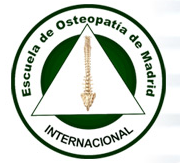To understand why approximately 25,000,000 Americans prefer osteopathic physicians (DOs) over allopathic physicians (MDs), it is important to look at the similarities between the two, and then the differences.
The time spent in medical school and residency programs is virtually identical for DOs and MDs. DOs spend four years in medical school, followed by a year-long rotating internship in osteopathic hospitals. If they choose to specialize, residency programs are available in the full range of specialties. Both MDs and DOs must take state licensing exams to become practicing physicians; in many states the exam is the same.
It is the focus within the medical training that the differences between DOs and MDs start to appear.
Osteopathic medical education places more emphasis on preventive medicine, body structure, osteopathic treatment and the importance of family practice. More than 75% of the DOs in the United States are in family practice, as opposed to only 25% of the MDs.
Osteopathic physicians are more likely to view a patient as a whole person, taking into account not just the physical symptoms, but also lifestyle, emotional well-being, and environment.
This philosophical debate whether to focus on the patient's disease or the total patient precedes DOs and MDs. It goes back to the beginnings of medical history when Hippocrates, the “father of medicine” believed in focusing on the patient. The rival Cnidian philosophy focused only on the disease itself.
Finally, the differences are highlighted when it comes to treatment.
Osteopathic physicians, also trained in the use of drugs and surgery, believe strongly in the self-regulating, self-healing, and self-repairing ability of the body. DOs are more likely to promote the body's own ability to heal itself through means as safe, non-intrusive and with a few side effects as possible. Osteopathic Manual Medicine (OMM) is often used as a primary healing tool.
Many patients choose DOs because they are more comfortable with the philosophies and treatments of osteopathy. Others may not be as aware of the difference in medical philosophies, but they return to DOs again and again. For these patients, the reason is simple. It works.
Osteopathic Medicine: Some Facts
• Osteopathic physicians emphasize that all body systems, including the musculoskeletal system, operate in unison. By recognizing the critical relationship between body structure and body function, the DO is trained to recognize that a disturbance in one system can alter the functions of another system and/or all systems.
• DOs focus not just on one symptom or complaint, but on the whole patient– including lifestyle,environment, diet, fitness, and emotional well-being.
• Osteopathic manual treatment of the musculoskeletal system has been proven to be a successful treatment technique for many disorders. It can provide a natural alternative to numerous drug therapies.
• 52% of graduating DOs enter primary care, such as family practice, internal medicine, and pediatrics,where they can focus on the whole patient.
Copyright © 1992, The Jones Group, 2254 San Diego Ave, San Diego, CA.
Go to Content








 4:16
4:16
 Daniel Enriquez de Guevara
Daniel Enriquez de Guevara





























.jpg)






















0 comentarios :
Publicar un comentario